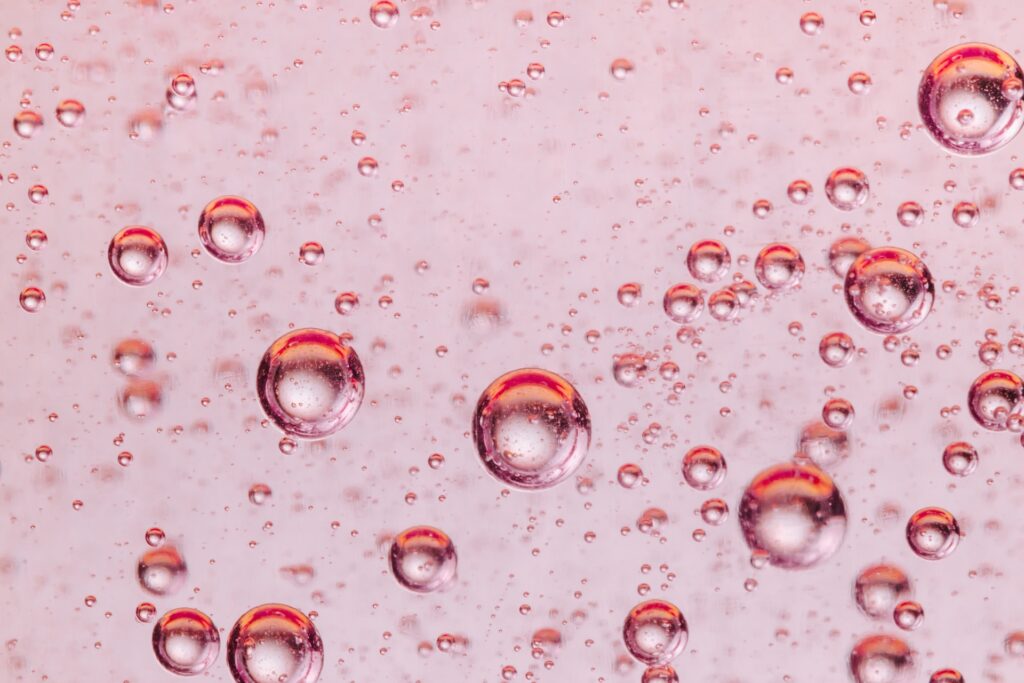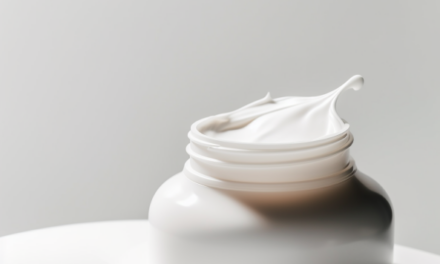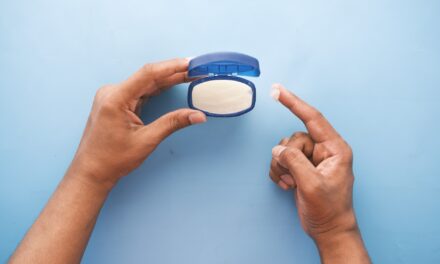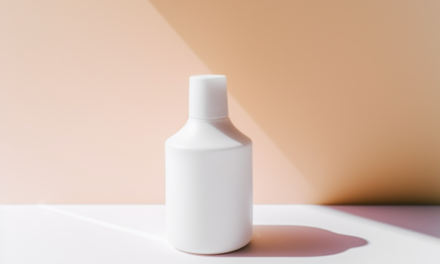Thiamidol: A New Powerful Skincare Ingredient Against Hyperpigmentation
For those in pursuit of a more uniform skin complexion, there’s an exciting new development to explore. Thiamidol, an innovative skincare ingredient, has recently emerged as a potent ally in the battle against hyperpigmentation. Its effectiveness rivals that of hydroquinone, but without the associated side effects. Let’s delve deeper to understand more about this promising active.

Hyperpigmentation and tyrosinase: the basics
Melanin, the pigment that gives our skin, hair, and eyes their color, is produced by cells called melanocytes with the help of an enzyme known as tyrosinase. When melanin production goes into overdrive due to factors such as sun exposure, hormonal changes, or inflammation, it leads to hyperpigmentation – dark spots or patches on the skin.
A variety of ingredients known as tyrosinase inhibitors aim to manage this overproduction. However, many of these inhibitors were initially discovered using mushroom tyrosinase and have shown underwhelming results on human skin.
Thiamidol: the new kid on the block
Thiamidol, a compound discovered in a large-scale study, stands out for its impressive ability to inhibit human tyrosinase more effectively than other known inhibitors like hydroquinone and kojic acid. Chemically, thiamidol belongs to the family of resorcinyl-thiazole derivatives.
Thiamidol’s inhibitory action on tyrosinase is reversible, meaning the effects cease once you stop using the product, which reduces the risk of permanent skin lightening, a side effect linked to some anti-pigmentation agents like hydroquinone.
Thiamidol is patented by the skincare company Beiersdorf, so for now you’ll find it exclusively in Beiersdorf brands like Eucerin and Nivea. It appears on ingredient lists as isobutylamido thiazolyl resorcinol.
Evidence of thiamidol’s efficacy for hyperpigmentation issues
Although thiamidol is a recent discovery, it has already gained substantial clinical evidence for its efficacy and safety in treating hyperpigmentation. Conditions such as melasma and post-inflammatory pigmentation have shown improvement in clinical trials, extending its benefits to individuals with darker skin tones, often an overlooked area in skincare research.
Most of these studies were conducted by Beiersdorf’s researchers, ensuring transparency and high quality as their results are openly available in academic sources. Importantly, an independent study not sponsored by Beiersdorf compared thiamidol favorably to hydroquinone, adding more credibility to thiamidol’s efficacy.
In summary, thiamidol is a promising new ingredient in the battle against hyperpigmentation. Its strong inhibitory action against human tyrosinase, its potential as a safer alternative due to its reversible nature, and its increasing evidence of effectiveness make it an exciting option for individuals dealing with hyperpigmentation.
Thiamidol vs. placebo against hyperpigmentation
Post-acne marks: Lighter skin tones
One German study, sponsored by Beiersdorf AG, investigated Thiamidol’s ability to lighten post-inflammatory hyperpigmentation (PIH) induced by epidermal wounding (similar to the one appearing after acne spots). The study was randomized and controlled, and participants applied the test formulation, either Thiamidol or a placebo (vehicle), to their skin for 12 weeks.
The findings showed that after just 2 weeks, skin treated with Thiamidol was notably lighter than the skin treated with the vehicle. This significant improvement in skin color persisted throughout the 12-week study, emphasizing Thiamidol’s effectiveness in lightening PIH.
Post-acne marks: Darker skin tones
Another study, this time based in Brazil, turned the spotlight on Thiamidol’s effect on post-acne hyperpigmentation in individuals with Fitzpatrick skin phototype V, a darker skin tone. Participants applied an oil-in-water emulsion with Thiamidol to their entire face twice daily for 12 weeks.
Compared to the vehicle treatment, Thiamidol showed statistically significant improvements in the visibility of acne-related hyperpigmentation after the 12-week treatment period. What’s more, no adverse effects like itching, burning, or redness were reported, highlighting its good tolerance profile.
Thiamidol vs. hydroquinone
At least two studies compared Thiamidol’s effectiveness with hydroquinone, a widely-used agent in the treatment of hyperpigmentation. The results suggested that Thiamidol, even at a 10 times lower concentration, was equally effective as hydroquinone in reducing facial hyperpigmentation.
Moreover, Thiamidol had a better tolerance profile. No worsening of melasma was observed with Thiamidol, unlike with hydroquinone where 10% of subjects experienced worsening melasma. Still, based on another study, an irritation from thiamidol is still possible – but it appears to be way less common compared to hydroquinone.
These studies suggest that Thiamidol might be a viable alternative to hydroquinone, especially for those who are concerned with potential serious side effects of hydroquinone.
Multiple products with thiamidol in one skincare regimen
Here are the products that, most likely, were tested in the studies – the ingredient lists 100% match the ones specified in the studies:
Post-acne marks: Darker skin tones
A study done in South Africa evaluated the efficacy of a skincare regimen consisting of three thiamidol-containing products in treating post-acne hyperpigmentation in individuals with Fitzpatrick skin phototypes V and VI. This study showed significant improvements in skin evenness and the melanin index score, a measure of skin pigmentation, after 12 weeks of treatment. Again, the Thiamidol-containing formulations were well-tolerated with no reported adverse effects.
Melasma
A 24-week randomized, double-blind, vehicle-controlled study investigated thiamidol’s efficacy in treating moderate-to-severe melasma. Participants applied three thiamidol-containing products as part of their daily skincare routine.
The results showed that thiamidol significantly improved clinical photography and MASI scores (a measure of melasma severity) compared to baseline and the vehicle group. Even after the treatment phase, the MASI scores remained significantly lower than baseline.
Practical tips for using thiamidol in your skincare routine
Effective concentration
The effective concentration of thiamidol starts at 0.2%. This is the concentration used in Beiersdorf brands like Nivea and Eucerin.
Incorporating thiamidol
For optimal results, apply thiamidol twice daily. You’ll find thiamidol serums, moisturizing creams with and without SPF and a tinted suncreen on the market.
Consider using a sunscreen with thiamidol to protect against harmful UV rays while reducing hyperpigmentation.
Combining thiamidol with other actives
You can combine thiamidol with other brightening and anti-pigmentation actives in your skincare routine, such as vitamin C (ascorbic acid), niacinamide, azelaic acid, and retinoids like retinol and retinal.
Patience is key: when to expect results
You could see the first positive results between 2-4 weeks after starting your twice-daily thiamidol routine. The best results are typically seen after 3 months of consistent use.
Thiamidol and pregnancy
While there have been no specific studies conducted on the use of thiamidol during pregnancy, no concerns have been raised in the scientific literature regarding its safety for pregnant individuals. However, if you are unsure, it’s always wise to consult with your physician.
If you’re battling hyperpigmentation, thiamidol could be a promising option, with a growing body of clinical evidence supporting its efficacy and safety. Remember, skincare is a marathon, not a sprint, so be patient and consistent with your routine.
Choose your products based on actives
WIMJ Search allows you to select skincare products based on what’s inside. Filter products by actives included, and exclude ingredients you don’t want. Check the concentration of ingredients and potential irritants.
Sources
- Effective Tyrosinase Inhibition by Thiamidol Results in Significant Improvement of Mild to Moderate Melasma https://www.sciencedirect.com/science/article/pii/S0022202X1930137X
- Effective reduction of post-inflammatory hyperpigmentation with the tyrosinase inhibitor isobutylamido-thiazolyl-resorcinol (Thiamidol) https://onlinelibrary.wiley.com/doi/full/10.1111/ics.12694
- Thiamidol containing treatment regimens in facial hyperpigmentation: An international multi-centre approach consisting of a double-blind, controlled, split-face study and of an open-label, real-world study https://onlinelibrary.wiley.com/doi/full/10.1111/ics.12626
- Efficacy and safety of topical isobutylamido thiazolyl resorcinol (Thiamidol) vs. 4% hydroquinone cream for facial melasma: an evaluator-blinded, randomized controlled trial https://onlinelibrary.wiley.com/doi/full/10.1111/jdv.17344
- Thiamidol in moderate-to-severe melasma: 24-week, randomized, double-blind, vehicle-controlled clinical study with subsequent regression phase https://onlinelibrary.wiley.com/doi/abs/10.1111/1346-8138.16080
- Inhibition of Human Tyrosinase Requires Molecular Motifs Distinctively Different from Mushroom Tyrosinase https://www.sciencedirect.com/science/article/pii/S0022202X18301003
Related Articles
Winter Skin Care: Navigating the Chilly Season with Healthy Skin
Let’s dive into understanding winter skin and how to best care for it.
The Dark Side of Lightweight Sunscreens
Do lightweight sunscreens provide enough sun protection? Lightweight sunscreen formulas have a higher risk of not providing the sun protection they promise. Learn more in this article.
Azelaic Acid: How It Works and Why You Might Need It In Your Skincare
Azelaic acid may not be the most hyped skincare ingredient, but, frankly speaking, it deserves way more recognition. Despite its underappreciated status, azelaic acid boasts a myriad of evidence-backed benefits, including combating acne, mitigating rosacea, addressing hyperpigmentation, and fighting against free radicals.
Why Has My Skin Become Sensitive All of a Sudden?
Have you recently noticed your skin turning into a battleground of reactions? Is your once-placid complexion now flaring up at your go-to beauty products? You’re not alone. Suddenly sensitive skin can perplex anyone. Here’s a breakdown of why it might be happening and what you can do about it.
Sunflower Seed Oil: The Top Face Oil For Skin Barrier
Struggling to decide which face oil to choose? Sunflower seed oil might not be the most glamorous or exotic of skincare oils, but it could actually be the best for your skin.
CBD Skincare Benefits and Unknowns
Discover the impressive potential of CBD in skincare and learn about the risks. Our evidence-based exploration covers the CBD potential for treating acne, eczema, psoriasis and combating inflammation.
Is Petrolatum In Skincare Bad?
Get the facts about petrolatum, a top ingredient in skincare. Learn how this powerful moisturizer soothes, protects, and hydrates the skin. Plus, discover why it’s trending on social media and how it’s safe even for the most sensitive skin areas.
Can You Use Retinoids for Rosacea-Prone Skin?
If you’ve been grappling with the frustrating skin condition called rosacea, you may have been advised to steer clear of retinoids. This advice typically stems from concerns that retinoids can further irritate your already inflamed skin. But here’s something that may surprise you: retinoids, in fact, are commonly used in rosacea medical treatments.
Sensitive & Reactive Skin: What to Avoid?
If you have sensitive or reactive skin, what not to do is at least as important as what you actively undertake in terms of skincare. Learn what ingredients and skincare practices to avoid to reduce your skin sensitivity issues and help heal your skin barrier.
Opting for Fragrance-Free Skincare: A Skin-Friendly Choice
Opting for Fragrance-Free Skincare: A Skin-Friendly ChoiceIs the smell of your skincare products hurting your skin? It's a question we often don't think about. Yes, the scents can be nice, but they can also cause problems. About one in three skin issues from cosmetics...




